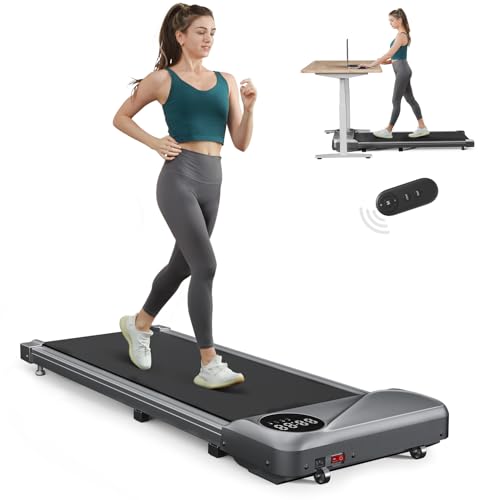The Reason Why Everyone Is Talking About Walking Machine Right Now
The Walking Machine: A Comprehensive Guide to Your Fitness Companion
In today's hectic world, where time is a high-end, preserving a consistent workout regimen can be a difficulty. For numerous, a walking machine— commonly called a treadmill— acts as an ideal physical fitness buddy. This short article offers an extensive look at walking machines, including their benefits, types, upkeep tips, and frequently asked questions.
Why Choose a Walking Machine?
Walking machines provide a useful and effective way to include cardiovascular exercise into life. Here are a number of crucial benefits:
- Convenience: Walking machines permit people to exercise anytime, despite weather or time constraints. They are perfect for busy schedules.
- Flexibility: Users can walk, jog, or perform at their own speed and intensity.
- Safety: Walking machines present a lower threat of injury compared to outside walking or running, specifically for beginners or those recovering from injuries.
- Tracking Progress: Many treadmills included built-in screens that track metrics like speed, range, and calories burned.
Types of Walking Machines
When considering a walking machine, it's vital to select the right type based on individual fitness objectives and space constraints. Below are the primary kinds of walking machines:
Type
Description
Manual Treadmills
These machines do not have a motor, and users need to walk or run to rotate the belt.
Electric Treadmills
Powered by an electric motor, permitting users to set the speed and slope easily.
Folding Treadmills
Created for simple storage, these treadmills can be folded up when not in use.
Desk Treadmills
Suitable for a dual work and workout environment, these compact machines enable walking while working.
Slope Trainers
These allow users to replicate uphill walking, boosting exercise intensity and calorie burn.
Selecting the Right Walking Machine
Selecting the right walking machine can substantially affect inspiration and efficiency. Here are some aspects to consider:
Key Features to Look For
- Motor Power: An effective motor ensures a smooth and constant exercise. For Read the Full Report , a 1.5 HP motor is typically adequate; for heavier use, search for 3.0 HP and above.
- Belt Size: A wider and longer belt offers more space for a comfy stride. Requirement sizes range from 16 inches broad and 50 inches long.
- Incline Options: Adjustable slope settings can simulate walking or running uphill, increasing the strength of the workout.
- Shock Absorption: Good shock absorption minimizes the risk of joint injuries and boosts convenience.
- Console Features: Look for integrated workouts, heart rate displays, and connection features like Bluetooth for a more appealing experience.
Budget Considerations
Walking machines come in a large range of rates, depending on functions and construction quality. Here's a rough budget breakdown:
Price Range
Functions
Under ₤ 300
Basic manual or small electric treadmills with restricted functions.
₤ 300 – ₤ 700
Advanced electric treadmills with slope, medium power motors, and much better service warranties.
₤ 700 – ₤ 1500
High-quality electric treadmills with bigger integrated displays, substantial features, and service warranties.
₤ 1500 and above
High-end designs offering sophisticated technology, functions, and resilient building and construction for serious fitness lovers.
Maintenance Tips for Your Walking Machine
To ensure longevity and optimum performance of a walking machine, consider the following upkeep ideas:
- Regular Cleaning: Dust and sweat can collect on the machine and the belt. Clean down the surface areas and clean the belt routinely.
- Lubrication: Depending on the design, lubricating the running belt regularly can avoid wear and tear. Inspect the manufacturer standards for advised lubrication schedules.
- Evaluation: Periodically check the machine for loose screws or used parts. Tighten and change as needed.
- Calibration: Occasionally, check the calibration of your machine's metrics to ensure they provide precise data.
- Proper Use: Follow the producer's suggestions for weight limits and functional standards.
FAQs About Walking Machines
1. Are walking machines a great exercise?
Yes, walking machines provide an exceptional cardiovascular workout, can assist with weight loss, and improve overall health.
2. How typically should I use a walking machine?
Objective for a minimum of 150 minutes of moderate-intensity aerobic activity each week, which can quickly be attained with regular sessions on a walking machine.
3. Can I lose weight on a walking machine?
Yes, integrating a walking machine regimen into a healthy diet plan can promote weight loss, specifically if combined with periods and incline training.
4. Is it safe for seniors to utilize a walking machine?
Yes, walking machines can be safe for seniors with low-impact settings and security features like hand rails. Nevertheless, people must seek advice from their healthcare provider before starting any workout program.
5. What's the distinction in between a treadmill and a walking machine?
The term “walking machine” normally describes a treadmill meant for walking, while “treadmill” can refer to machines used for various strengths, including running.
With their flexibility and convenience, walking machines can significantly improve one's fitness journey. By thoroughly picking the ideal type, ensuring appropriate maintenance, and incorporating various workout strategies, users can maximize their walking machine's benefits. Just like any workout regimen, consistency is crucial to achieving enduring fitness results.
